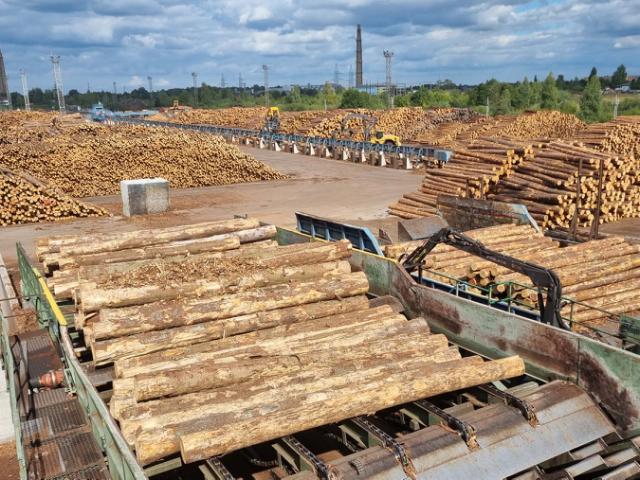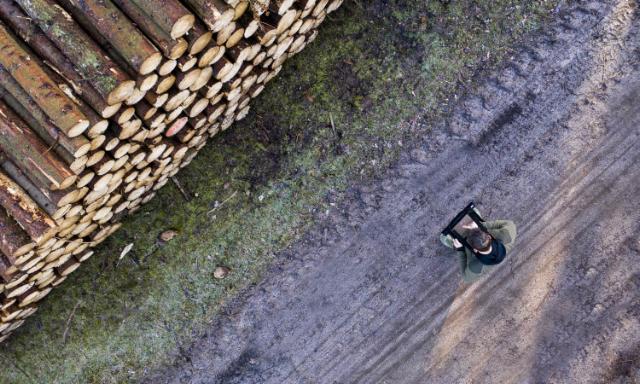Customer story
The investment adviser has invested in forest

For the past 30 years, Gustav D. Lassen has advised both private individuals and financial institutions on investing in stocks. In his own portfolio, in addition to stocks, other asset classes are included, with Baltic forest being an important element, partly due to diversification, the forest’s annual growth, and the possibility of a Danish partner.
On 1 October 2024, all business units under Hedeselskabet changed their name to Dalgas. This applies to HedeDanmark, HD 2412, HD NordicTrees, HD Silva, HD BioRec, HD Forest, HD Forest Germany, HD Seed, and HD LogSystems.
With employment at Credit Lyonnais and Merrill Lynch in London, a position as Stock Sales Manager for institutions in Nordea Danmark and Managing Partner at ABGSC and today as an Investment Consultant at Investering & Tryghed, Gustav D. Lassen has made a career out of advising others about how they can best invest their capital.
According to him, the recipe for success as an investor is not just a matter of reading and understanding numbers – although that helps:
- Over a long period of time, the stock market has provided solid liquid returns, i.e., due to a falling level of interest rate and significant earnings growth in the companies. The low level of interest rate seems to continue for some time to come, and it is likely that companies will continue to adjust their cost base to the general activity in the market.
Stock prices reflect expectations for future earnings. Expectations tend to change over time. It is therefore important as an investor to ask yourself a few questions. As an investor, do I, for example, get paid for the risk I am exposed to?
It was based on this approach to investment that the then 37-year-old consultant in 2000, with his own funds and independently of his professional work, began to build a forest portfolio of almost 1,000 hectares in Latvia, and he has held on to this portfolio ever since. An investment in forest must thus be seen as a supplement to much more liquid investments such as listed stocks and bonds.
"Sustainability and climate are of course positive side benefits, but it was the possible return and the modest risk that made me supplement my portfolio with forest. That, and then the opportunity to do it with a Danish business partner"
Gustav D. Lassen
A feel for the forest
Although forest is on the agenda today, i.e. because of amenity value, hunting and as an important contribution in the climate fight, the acquisition was motivated by other and perhaps less altruistic motives.
The Danish partner is Dalgas, owned by Hedeselskabet, which helps investors find and buy forest in the Baltics, and which, subsequently, manages the forest according to the investor's wishes.
At the same time, he explains that even though he doesn't visit the forest in Latvia more than a few or three times a year, profound responsibility comes with the investment in forest:
- As a long-term investor, you are in fact the owner of a forest property, but to the same extent supervisor of a piece of nature that is part of a local community and has been so for centuries. It requires that you behave properly.
"It was crucial for me that I could call someone who spoke Danish when I moved into unknown territory. At the same time, I was able to leave the forest management completely to Dalgas, once we had agreed on the long-term plan. I have gradually developed a close and trusting relationship with the local foresters, so I don't have to spend a lot of time looking after my investment"
Gustav D. Lassen
A risk you can relate to
However, the trees do not grow to the sky - not even when it comes to forest investments. As with all investments, there are risks involved with having your money elsewhere than stuffed under the mattress. In the forest, the primary threats are forest fires, storms, and beetle attacks. According to Gustav D. Lassen, these are risks that you must live with and, when compared to the long-term return, can be accepted:
- If you do your homework and choose a forest in a place with sufficient rainfall and where there is good percolation of the water into the soil, then trees grow no matter the general economy. As an investor, you can easily leave the trees for a year or two if the prices of raw wood decrease for a period. If you have a long-term plan with your investments, forestry provides a stable return and is a good way to diversify an overall portfolio, says Gustav D. Lassen.
Investment in forests is not geographically isolated to take place in the Baltic countries, but in 2000 Gustav D. Lassen chose Latvia for one simple reason: More forest for the money and the opportunity to register.
- At the time I thought that it was likely that the Baltics would have a desire to increase their growth and promote their traditional industries and eventually become an integrated part of Scandinavia, which historically they have always been. I believe this is still the main scenario for the Baltic countries. I considered other countries, but the combination of the lower price and Latvia's orientation towards Scandinavia and the EU settled it for me. The raw wood can be sold at the same market prices as that of prices in Europe, and today the infrastructure and the forest industry are on par with that of other countries. In addition, Latvian forest is still significantly cheaper than equivalent Swedish forest, says Gustav D. Lassen.
.jpg&width=640&format=webp&quality=75)
Since Gustav D. Lassen's original investment, the Baltic countries, in addition to the EU, have become members of the euro cooperation and NATO.
According to Gustav D. Lassen, this is one of the reasons why forests are still interesting for investors. Add to this the continued low prices, low interest rates and the generally low-cost level in the Baltics. For him, these are weighty arguments that precisely the forest stock class is interesting and a rational way to diversify an overall portfolio:
- A forest investment forces you to have a long-term horizon - which, by the way, you should always have when it comes to investments. The only factor that could seriously threaten a forest investment in the Baltics is, if the climate changes mean that the entire region is suddenly under water or lacks rainfall, or if the West does not politically and militarily support NATO, and that Russia as a consequence of that acts aggressively. In both situations, most people will probably worry about matters other than their investment portfolio, says Gustav D. Lassen.
Other customer stories from our clients and partners
Experiences from previous investor field trips to the Baltics
Dalgas has been managing forests in the Baltics since 1998. For a quarter of a century, the company has managed forests for several Danish and international investors from three offices in Estonia, Latvia, and Lithuania.
HessenForst has streamlined and certified its round timber measuring using LogStackPro
A potential wait of several days has been reduced to a few seconds' efficient computer calculations at HessenForst, the forestry department in the German federal republic of Hessen.Related services

Forest investments
Secure investment in forests in Estonia, Latvia, and Lithuania, where you get hassle-free management and a flexible collaboration with our experienced experts.Hedeselskabet – partnering with nature
Dalgas is part of Hedeselskabet – founded in 1866 and still growing. Hedeselskabet is an association of people working for a sustainable future. And who have the necessary knowledge and experience to lead the way.
Hedeselskabet supports
Working for a sustainable future requires resources. Hedeselskabet participates in the development of nature and the environment, and we take responsibility. Therefore, we allocate funds to relevant development projects and member-driven projects, as well as award scholarships. For the benefit of all of us – now and in the future.

